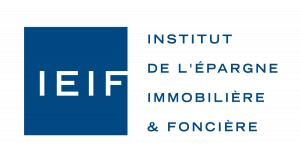
Our story
In 1986, when IEIF was first established, the initial objective was clear: within the framework of a neutral friendly society, without any kind of subsidy and independent of all business activities, provide the real estate market with the type of data and materials that can be found in financial markets. There was a considerable amount of catching up to do.
It did, however, have several key advantages.
- At the outset all institutional real estate investors, including SCPIs, listed property companies and insurance companies, participated in its construction through their membership and their support as clients. From this healthy start, other major players joined the institute, and all professions in the real estate cycle are currently represented. Clearly such a level of support has created the best conditions to see this project, aiming at more transparency and better analysis, through to a successful conclusion.
- Second, the approach has clearly been extremely professional. Databanks, support materials and the statistics produced are the result of precise methods, procedures and competencies: databank management is a very technical field that involves quality and productivity. We have always concentrated solely on our core business.
- Third, the freedom created by being objective and having accurate information has been leveraged to initiate or encourage a new way of thinking during meetings or in publications.
Time passes quickly, “new” is soon “has been”. IEIF has constantly maintained the role it defines as always being one step ahead and geared to the future.
Some results have been more visible than others. For example, at the end of the eighties, IEIF launched a very structured information source about property companies, including specialist indexes. From the outset we published in English. Later, when SCPIs went through a difficult phase, meticulous statistical surveillance and fine-tuned analyses helped them restore their legitimacy in property savings markets.
Finally, the department of Analyses and Forecasts, created in 1995 for residential and office markets, is now on par with the most established US and UK organizations. Progress made in understanding demand has been positive, not just theoretically but also statistically, for the French real estate market.
Throughout the years, IEIF has followed a combined approach with other players toward more transparency and information sharing.
Today many firms, such as investors and agents, have research departments.
But just as in the field of finance, the role of an independent objective organization, which is sensitive to theoretical questions while remaining close to the major stakeholders, will always be vital in the dynamics of spreading information.
